[javascript protected email address]
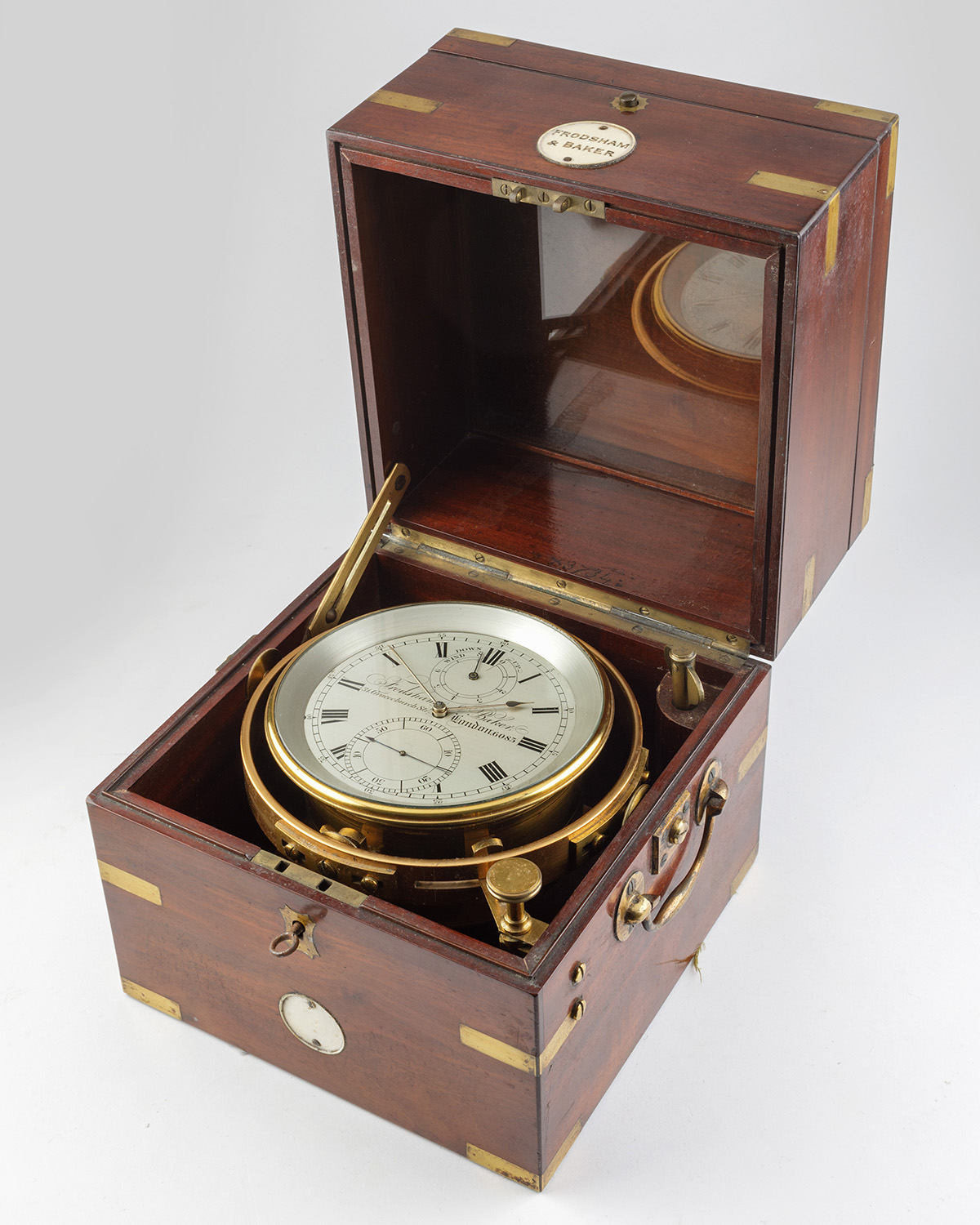
Frodsham & Baker, London No 6083.

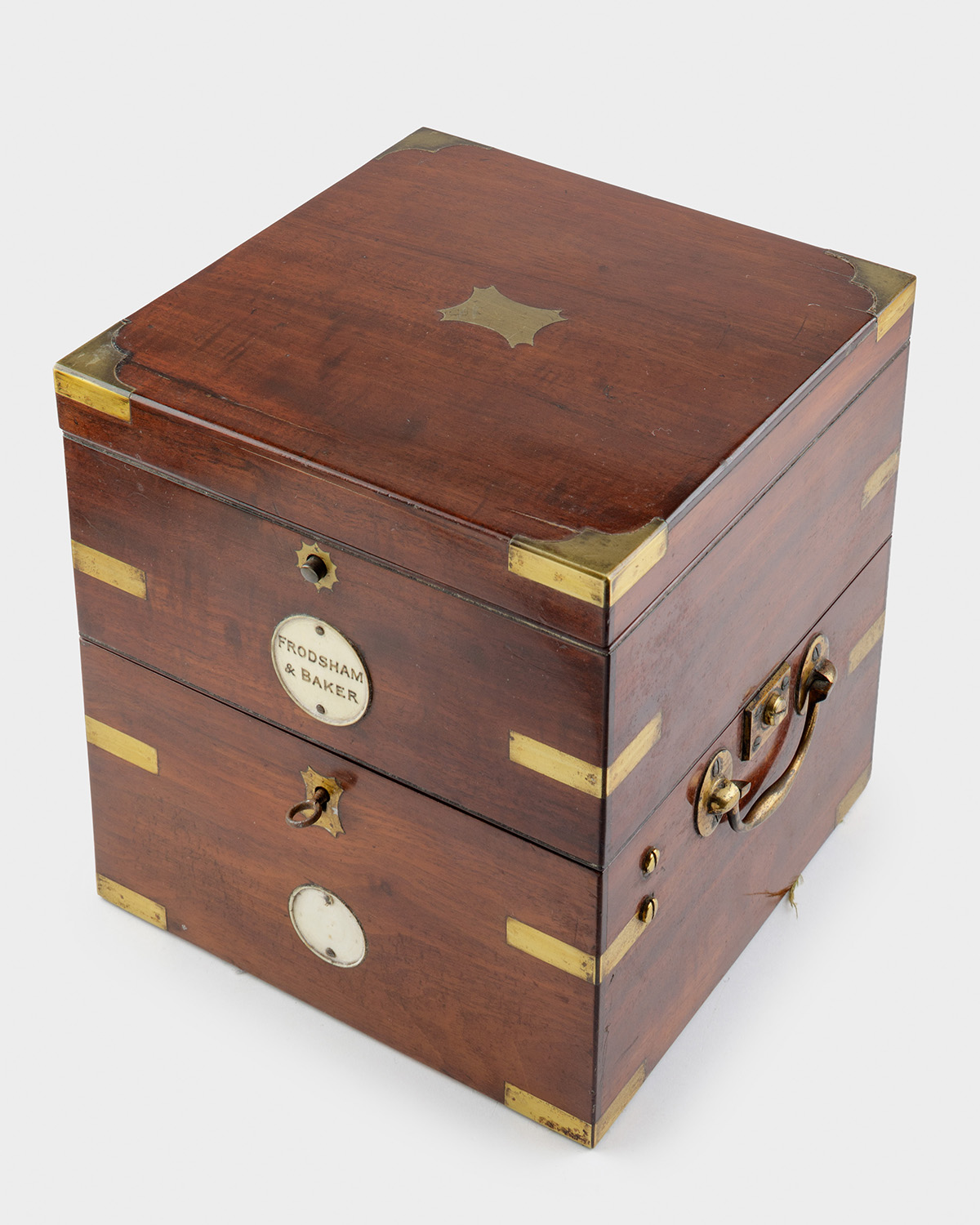
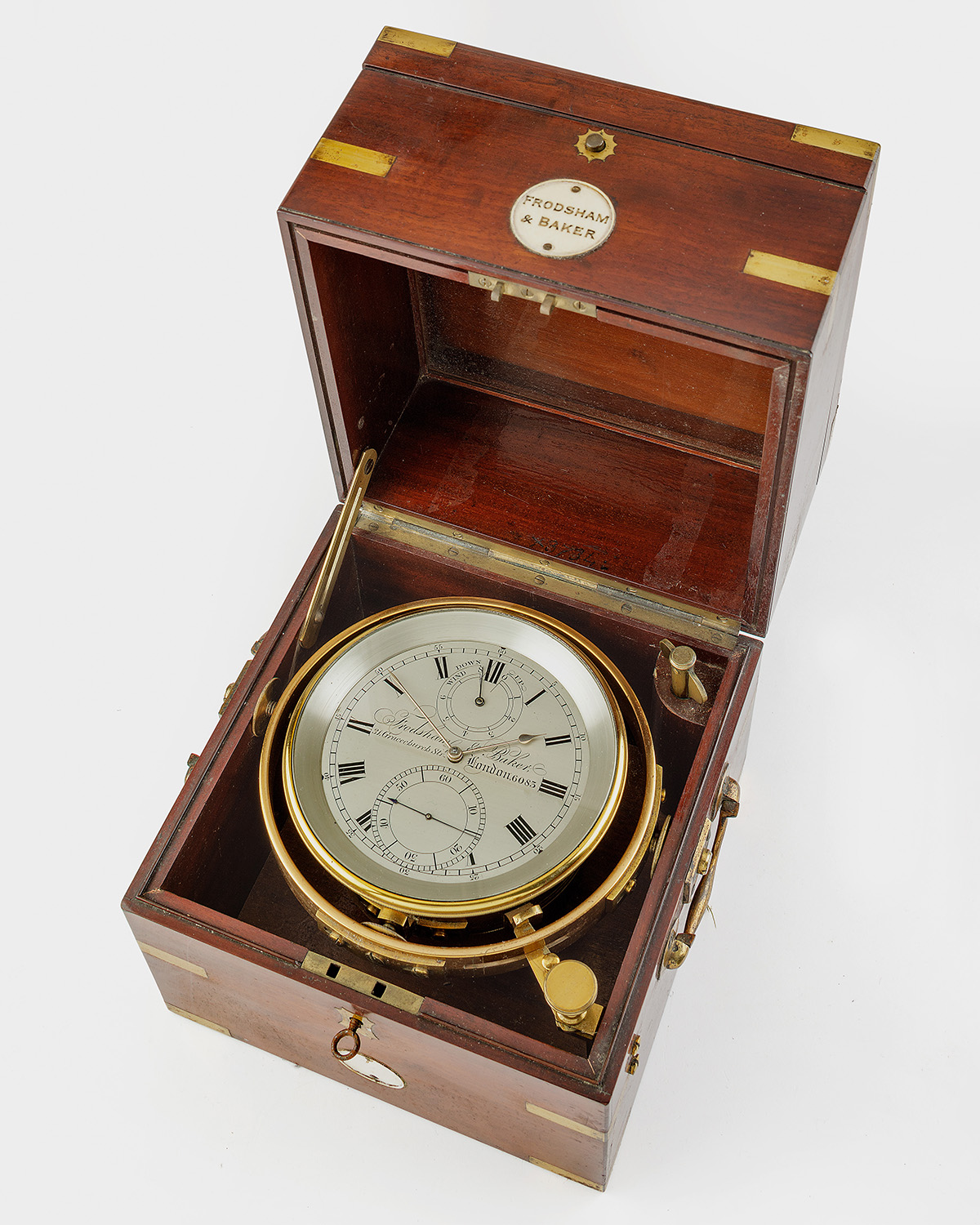
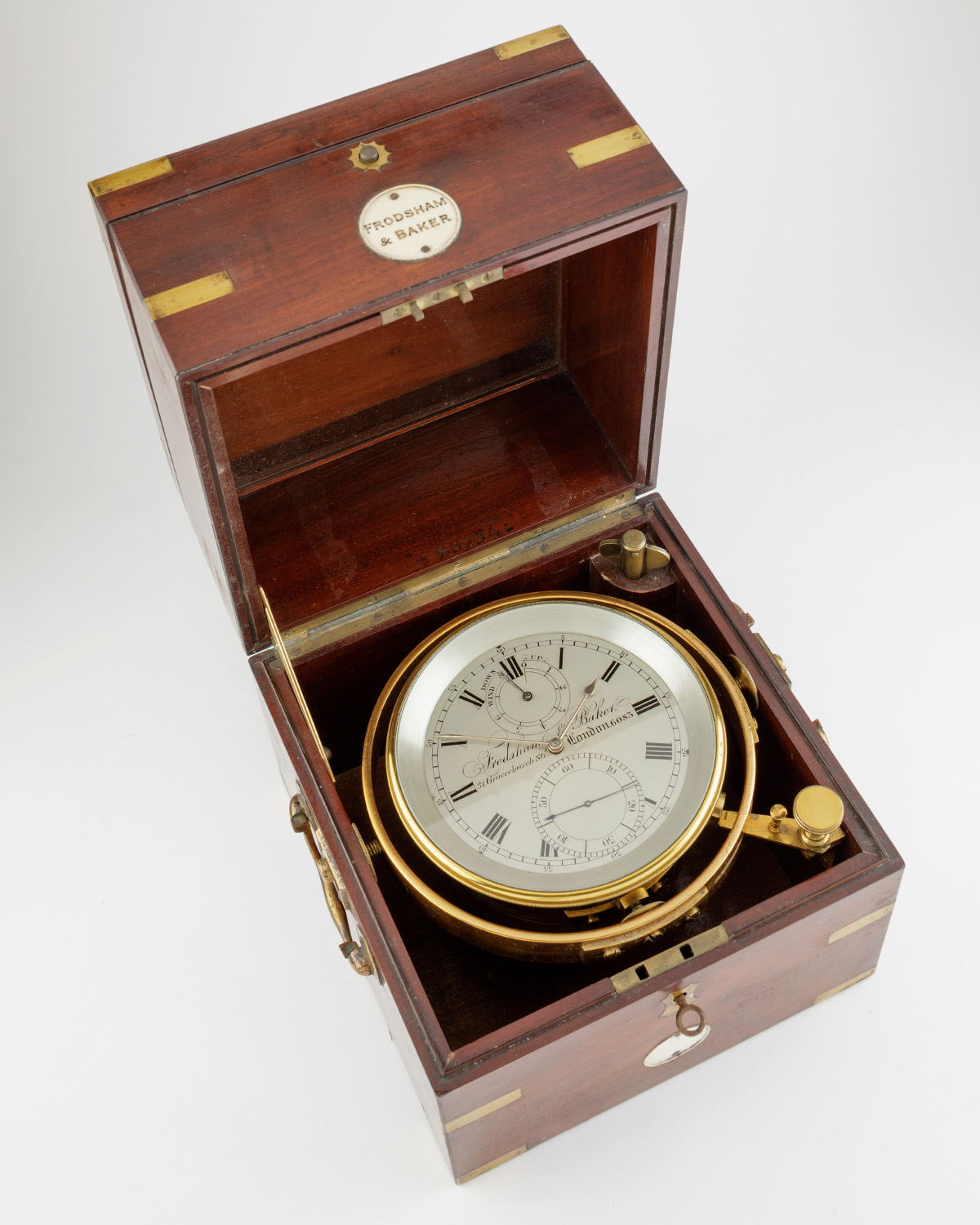
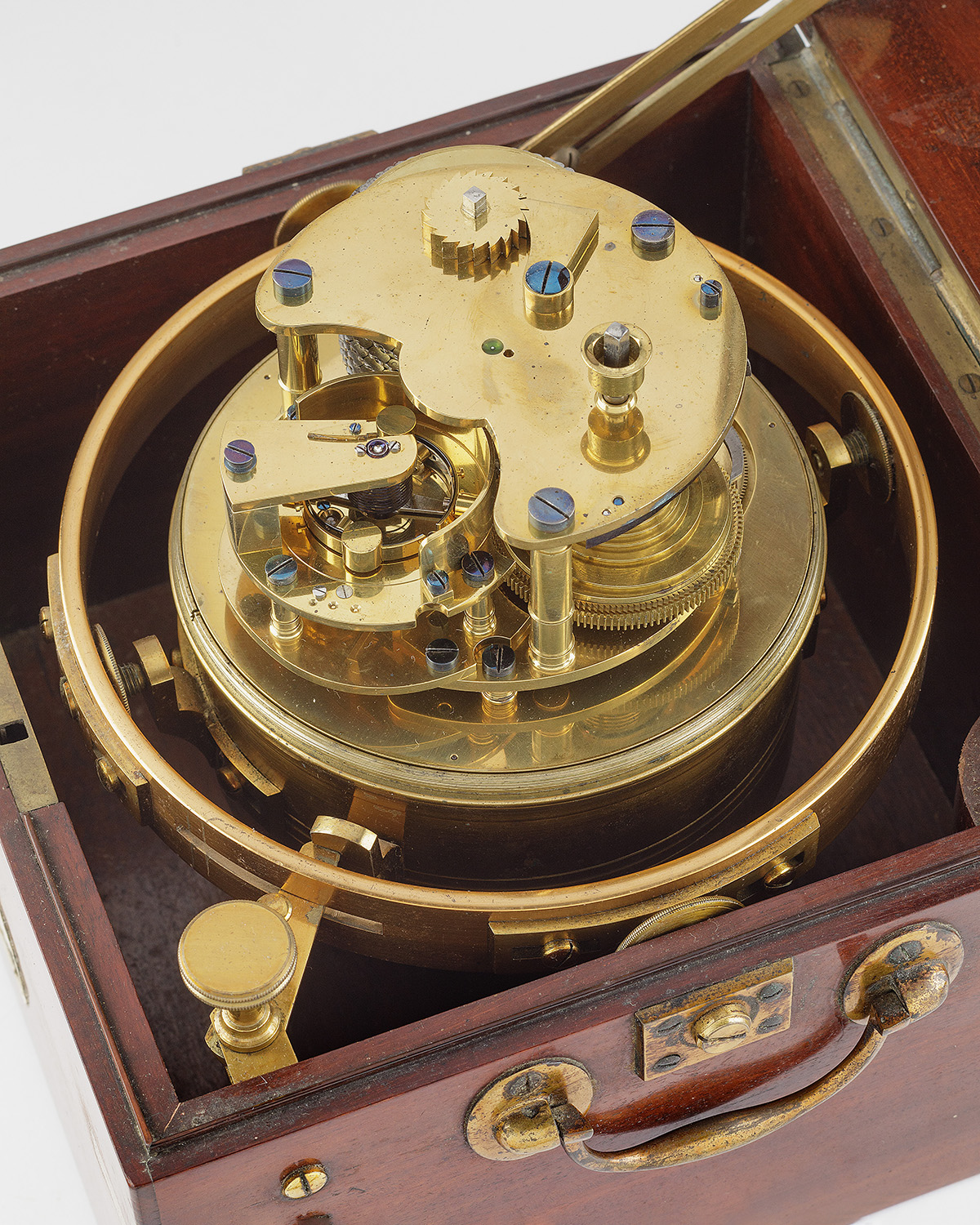
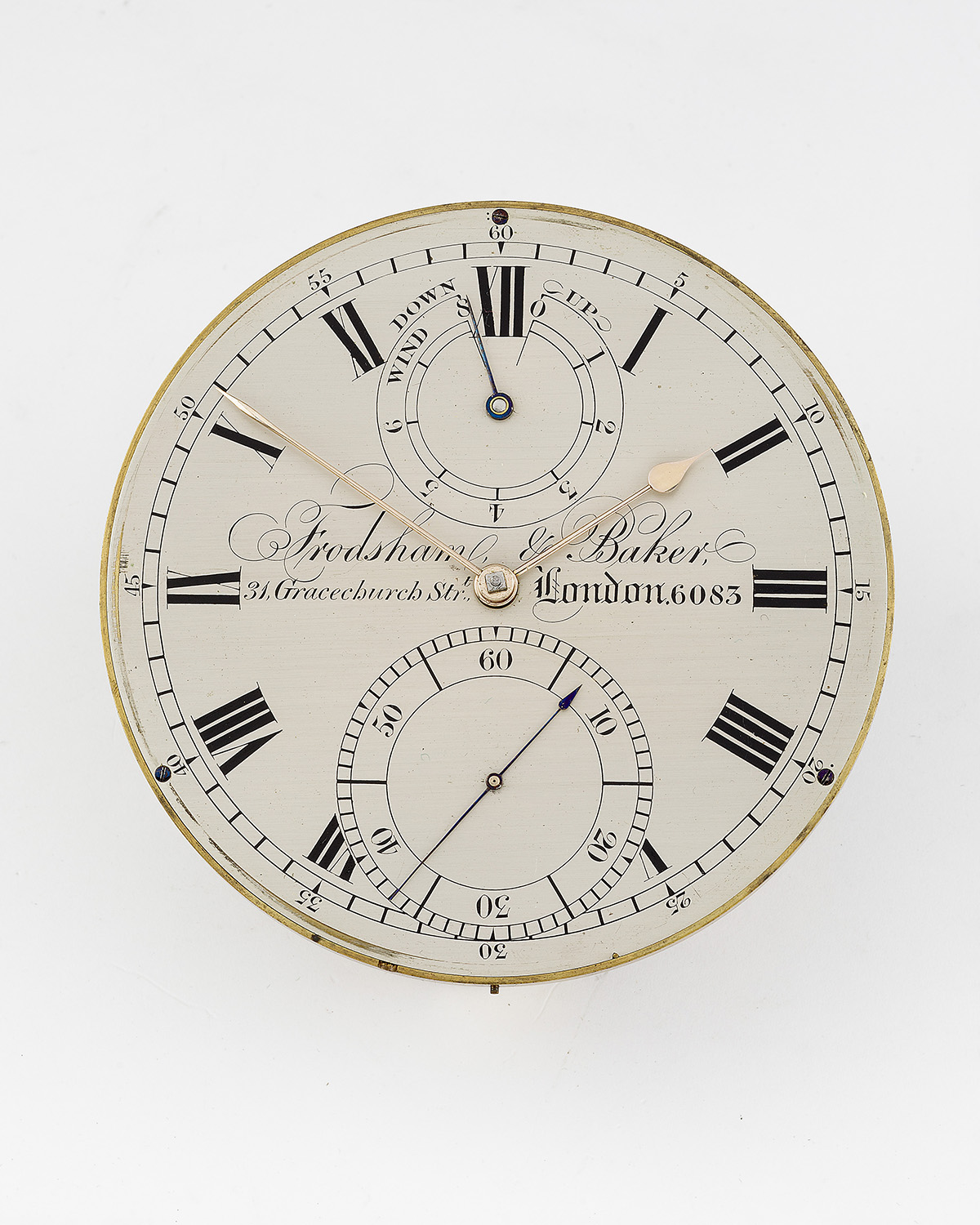
Circa 1855
Sold
8 Inches Square Case
A fine 8-day mahogany marine chronometer. CASE The three-part brass-bound solid mahogany case with vacant brass cartouche on the original top lid, the centre section recessed with a bone signature plaque signed Frodsham & Baker, the lower section with inlaid brass escutcheon and a vacant bone plaque, folding handles to the sides, original baize lining on the base . DIAL The 4.5-inch silvered dial signed Frodsham & Baker 31, Gracechurch Str. London 6083, with outer minute band marked with Arabic five-minute numerals framing the Roman chapters with original gold hour and minute hands, the subsidiary power reserve dial at XII marked from 0-8 with instruction to wind at 7, the large observatory-style subsidiary seconds set between V-VII, with blued steel hand. MOVEMENT The large three-quarter plate movement has three ringed pillars and maintaining power to the chain fusee, free sprung blued steel helical balance spring with diamond endstone and Earnshaw type escapement, the balance on a separate sub-assembly with a cut bimetallic balance with heat compensation weights and special Frodsham double auxiliary affix, sitting in a weighted, gimballed bowl. With a tipsy key and a case key. George Frodsham Over a long period of the 19th century there were in fact four branches of the Frodsham clockmaking family all operating separate horological businesses. The Frodsham & Baker who sold this chronometer was George Edward Frodsham 1831-1905 who was the great grandson of the original founder of the firm William Frodsham (1728-18070. George went into partnership with Baker (probably Edward Baker) between 1854 and 1863 and thereafter traded under George Frodsham until 1901. It is noted in Vaudrey Mercer's excellent book ‘The Frodshams' that Frodsham & Baker sold their 2-day marine chronometers for between £30-35 whilst their 8-day examples sold for £40-43 unless it had an auxiliary for extremes of temperature (as in the present example) in which case is sold for £44-50 BALANCE The affix on this balance wheel is thought to be Frodsham's double auxiliary (with thanks to Richard Stenning of Charles Frodsham & Co.)
